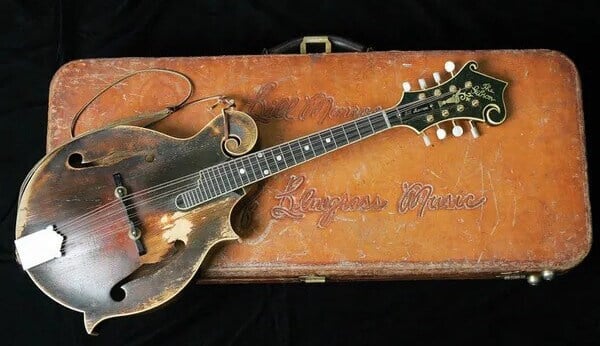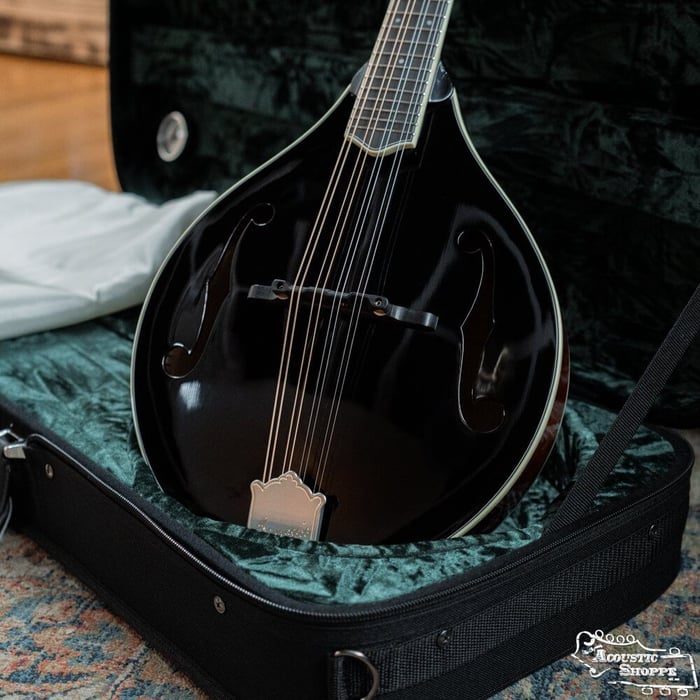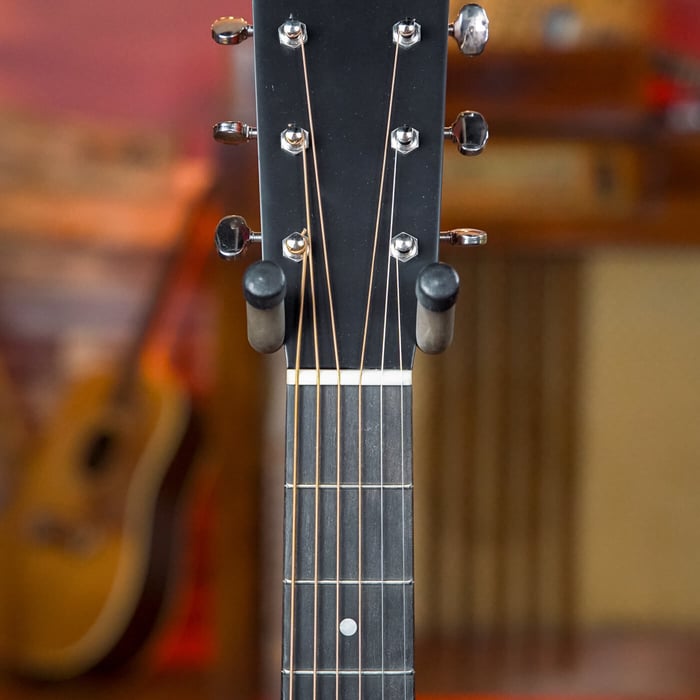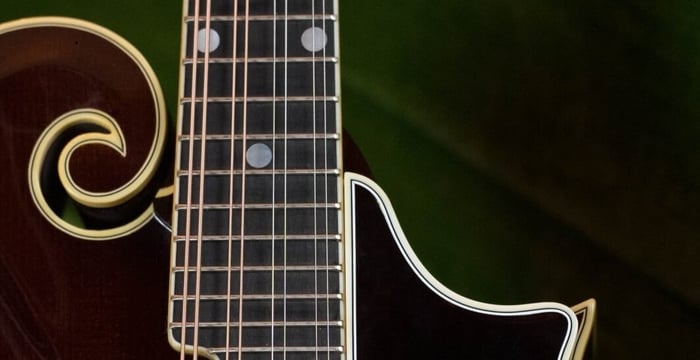On July 9th, 2023, music enthusiasts around the world will commemorate the 100th anniversary of a legendary instrument that forever changed the landscape of American music—the July 9, 1923 Gibson F-5 mandolin owned by the father of bluegrass himself, Bill Monroe. This cherished instrument holds a significant place in the history of American music and continues to inspire generations of musicians. Join us as we delve into the fascinating story behind this iconic mandolin and explore its lasting impact on the world of bluegrass.
The Birth of a Musical Icon
In 1923, Lloyd Loar, a brilliant engineer and sound innovator, crafted a mandolin that would forever be associated with bluegrass music. This mandolin, designated as the F-5 model, was built by the Gibson Company and would eventually find its way into the hands of a young Bill Monroe. Known for its distinctive sound, the F-5 featured a carved spruce top, flamed maple back and sides, and an elegantly designed scroll, all of which contributed to its exceptional tone and projection.
Revolutionizing the Sound
The 1923 Gibson F-5 mandolin introduced several design enhancements that revolutionized the sound and playability of the instrument. The F-5's signature "tone bar" system, an innovative bracing technique developed by Lloyd Loar, optimized resonance and projection, providing a rich, warm, and vibrant sound that defined bluegrass music. This groundbreaking design paved the way for future mandolin builders and players to explore new possibilities in sound production.
Bill Monroe and His F-5 Mandolin
Around 1945, an extraordinary encounter took place when Bill Monroe stumbled upon the 1923 Gibson F-5 mandolin that would become synonymous with his name. As the story goes, Monroe discovered the instrument in an unlikely location—a barbershop window in Florida. Little did he know that this chance encounter would shape the course of his musical career. With a stroke of luck and a mere $150, Monroe acquired the instrument that would become an extension of his soul and an emblem of bluegrass music. This serendipitous purchase marked the beginning of a profound relationship between an artist and his instrument, laying the foundation for a legacy that would resonate for generations to come.

The Scratch Heard 'Round the World
One of the most iconic events involving Bill Monroe and his F-5 mandolin occurred around 1951 when Monroe decided to scratch off the Gibson logo from the headstock of the instrument. There are many stories as to why Monroe took this action, including that he had sent the mandolin back to Gibson to get a number of repairs including a neck reset done. Upon getting the mandolin back after many months of waiting, he found that only the neck reset had been completed, leaving the other issues were unaddressed. Frustrated with this, he took out his pocket knife and removed the pearl inlay “Gibson” from the headstock, leaving only “The” behind. Sonny Osborn is reported as hearing directly from Monroe that he only did this, so people would quit asking to see and play the mandolin. Whatever the reason, the iconic headstock overlay was removed and replaced with an unscarred one years later, and eventually sold at a Christie’s Auction for $37,500, a testament to its iconic status in music history.
A Broken Melody, A Restored Harmony
In a tragic turn of events, Bill Monroe's beloved F-5 mandolin suffered an act of vandalism around 1985 when it was shattered into over 200 pieces by a fire poker. Devastated by the loss, Monroe turned to renowned luthier Charlie Derrington at Gibson for help. Derrington embarked on an ambitious restoration project, painstakingly reassembling and repairing the shattered mandolin, piece by piece. The process took months of meticulous work, but eventually, the F-5 was resurrected, its voice restored to its former glory.
The Legacy of Bluegrass
Bill Monroe's innovative approach to music and his mastery of the F-5 mandolin influenced countless musicians who followed in his footsteps. Bluegrass legends such as Ricky Skaggs, Sam Bush, and David Grisman credit Monroe's mandolin playing as a significant source of inspiration in their own musical journeys. The F-5 mandolin, inextricably linked with Monroe's pioneering spirit, symbolizes the roots and essence of bluegrass music.
Preserving the Legacy
Over the years, the 1923 Gibson F-5 mandolin has become an invaluable artifact of American musical history. Today, it is housed in the Country Music Hall of Fame and Museum, carefully preserved and revered as a symbol of the genre's evolution. Its road-worn beauty and rich history continue to captivate visitors, allowing them to connect with the origins of bluegrass music and pay homage to the remarkable talent of Bill Monroe.
Honoring the Centennial Anniversary
As we celebrate the 100th anniversary of Bill Monroe's 1923 Gibson F-5 mandolin, it is a time to reflect on the impact of this iconic instrument. Through countless recordings, live performances, and the passion of musicians across the globe, the F-5 mandolin has become a cherished symbol of bluegrass heritage. It serves as a reminder of the power of music to transcend time and cultural boundaries, touching the hearts of people from all walks of life, and the impact that these master-built instruments unknowingly have on the world.
The 100th anniversary of Bill Monroe's 1923 Gibson F-5 mandolin on July 9th is a momentous occasion in the history of bluegrass music. This remarkable instrument, with its unparalleled craftsmanship and distinctive sound, continues to inspire and captivate audiences worldwide. As we honor the legacy of Bill Monroe and his beloved mandolin, it’s hard not to imagine what impact some unassuming instrument in a shop window today might have on future generations.







